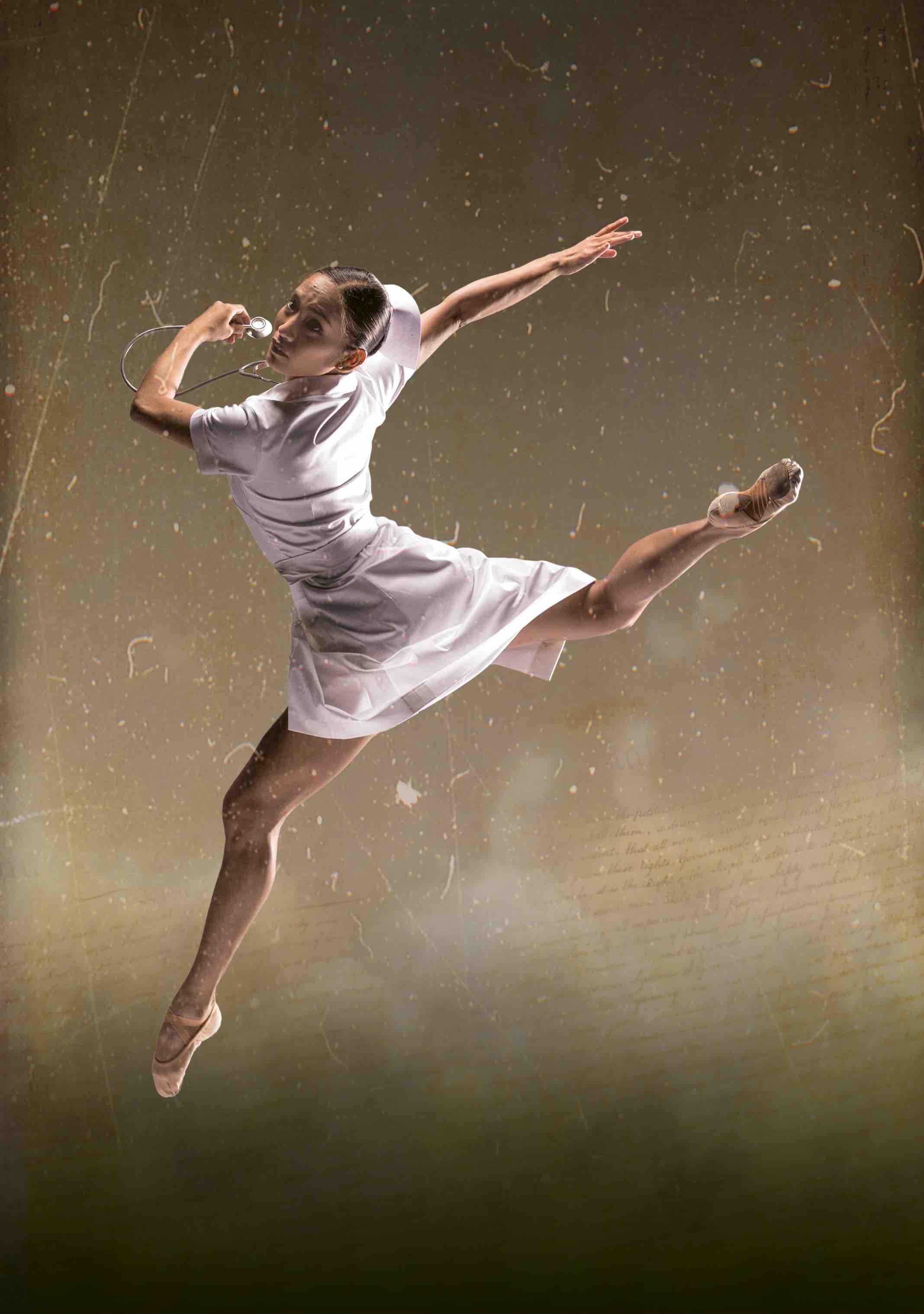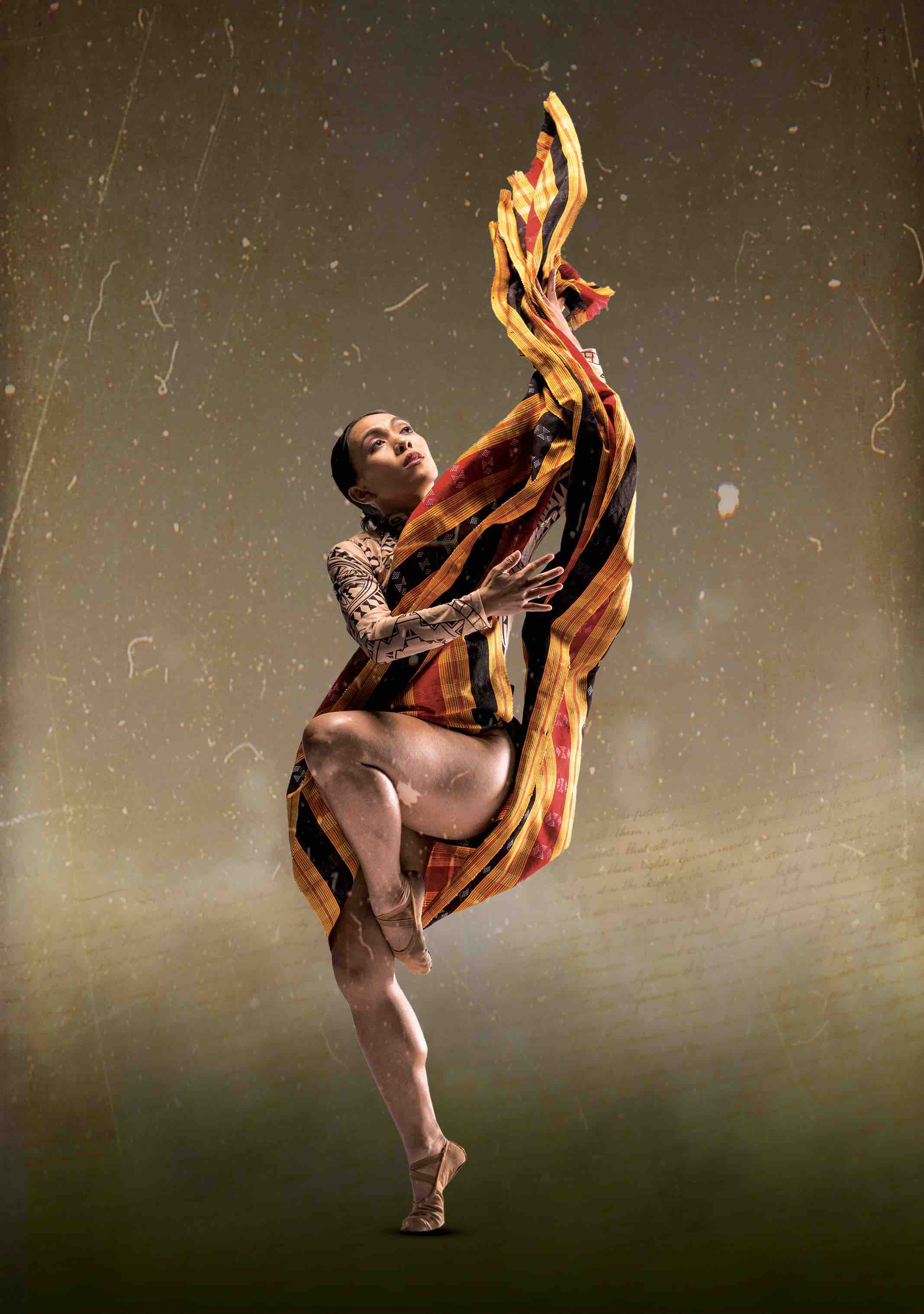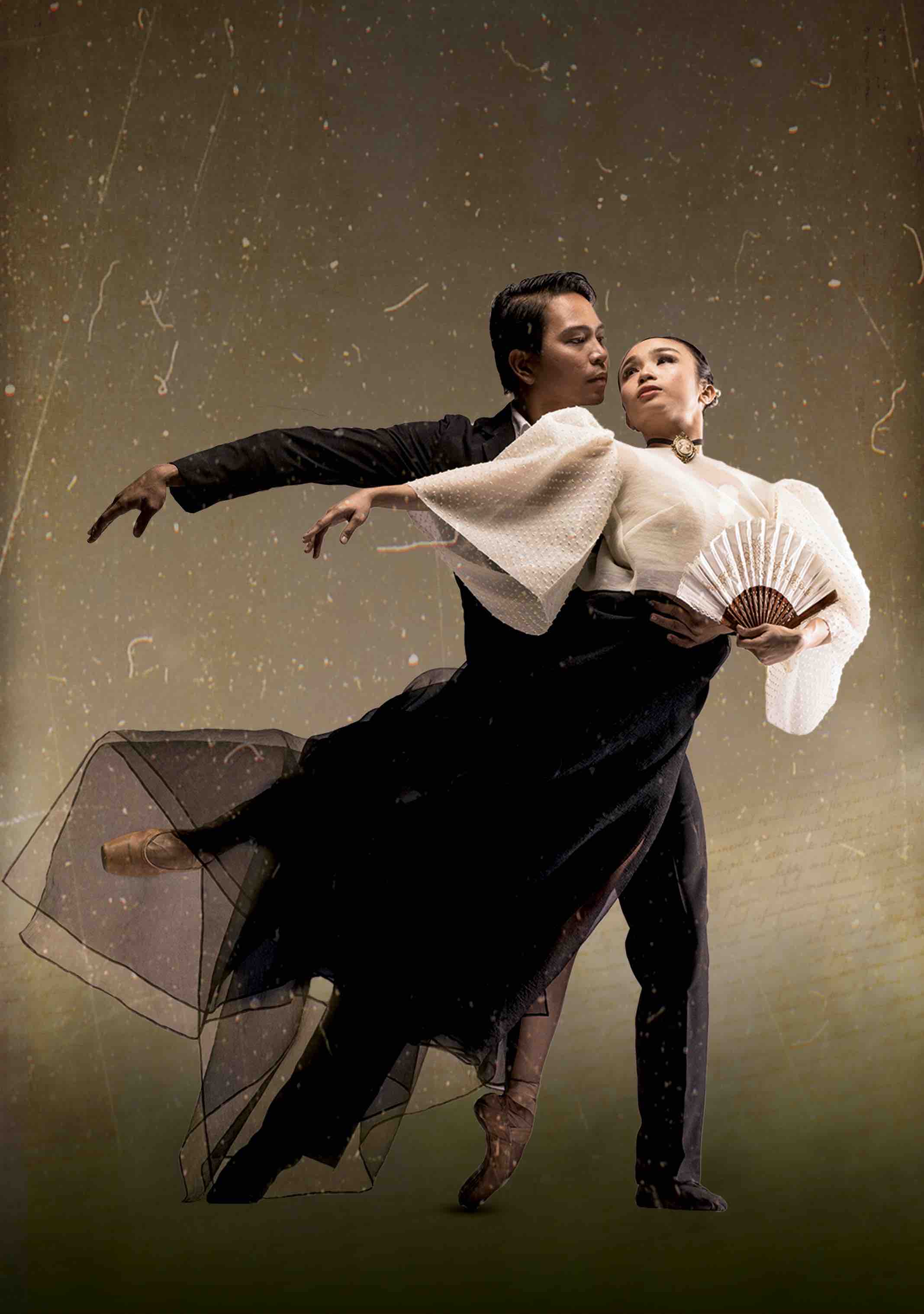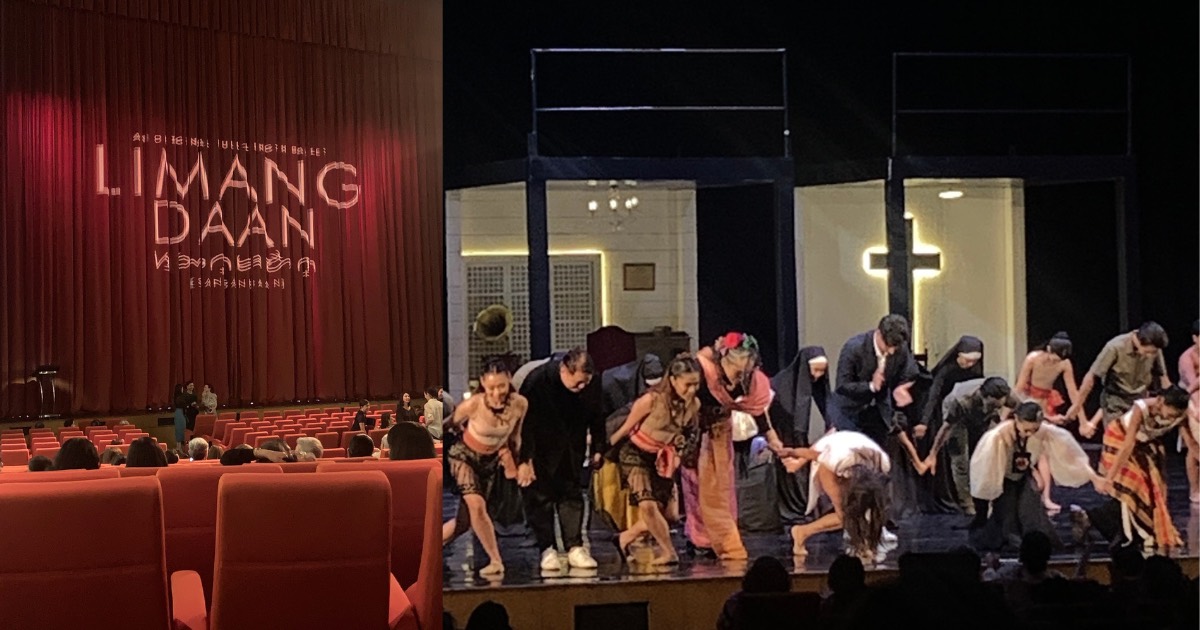REVIEW: 'Limang Daan' offers a moving portrait of Philippine history through the Filipina’s eyes
In the very first scene of Ballet Philippines' Limang Daan, different women are each confined inside a box.
There's a nurse, weary from the long, thankless hours of being a healthcare provider in a foreign country, worsened by a doctor who doesn’t know how to take “no” for an answer. Also in a box is Maria Clara, straight from the pages of Rizal’s novels, whose initial demure and coy personality slowly gives way to the discovery of love and her true self. In another is a nun struggling with the balance between femininity and piety in the face of a rigid Mother Superior.
An Igorot woman, shipped away from her homeland to become an attraction at the St. Louis’ World’s Fair, is also on stage. There are three Cordillera women who are facing problems with ownership and protection of their lands in the face of unwelcome despots. A babaylan is also seen—she's confronted by “men of God” dressed like jesters and must deal with the consequences of non-conformance with standard practices and faith.

Moments later, they step out of their boxes; they move, dance, and interact with each other. It’s a reminder that no restraints like time can hold them down, that despite the gaps in time and space, they are all connected and driven by the same force: the indomitable Filipina spirit.
These are the narratives represented and told by Ballet Philippines in Limang Daan. This original full-length ballet is described by the company as a “time-bending narrative” that “illuminates the struggles of Filipino women” across 500 years of Philippine history. Closing out BP’s 54th season, the show follows the libretto written by acclaimed Filipino filmmaker and writer Moira Lang, whose feminist consciousness undoubtedly steers its tenor.

The original music score behind the ballet, created by Erwin Romulo and Malek Lopez, is equally captivating. Their use of both traditional Southeast Asian instruments and glitchy electronics captures the way the narratives shift from past to present and every-when in between. Designer JC Buendia does not compromise mobility in creating the beautiful designs and silhouettes that show off the varying time periods each dancer is meant to represent.
There’s no question that Limang Daan's magic is most effectively, perfectly captured through the choreography of artistic director Mikhail “Misha” Martynyuk. For nearly two hours, audience members are left transfixed by the graceful yet powerful movements of the cast, who manage to evoke feelings of rage and grief as well as divine femininity and undeniable strength even without words.
Particularly striking was the story of Gawani, an Igorot who had been recruited to be part of the 1904 St. Louis’ World’s Fair. Just last year, the Washington Post made a series of investigative reports on the Smithsonian National Museum of Natural History. It was eventually found that the brains of 27 Filipinos, some belonging to the Igorot people who had been displayed at the World’s Fair, were being kept in the museum without their families’ knowledge or consent. Watching Gawani’s life being reduced to a mere spectacle for the amusement of foreigners who refuse to acknowledge her as anything more than a display, only for her to writhe in pain and succumb to her death, made for an incredibly moving performance.

If you haven’t visited the Ballet Philippines’ website, you wouldn’t know the names of Limang Daan's female protagonists. But at the same time, you don’t have to because these women and their stories are timeless and timely, relevant and relatable. They’re their stories just as much as they are our own: efforts to both survive in and subvert a world dominated by a patriarchal system that is unforgiving and oftentimes cruel.
It seems only fitting that Limang Daan premiered on March 8, celebrated across the world as International Women’s Day. In her opening remarks, Ballet Philippines president Kathleen Liechtenstein pointed out that the Philippines was deemed the most gender-equal country in Asia. While this may seem like a huge indication of progress, there’s no denying that being a woman still comes with societal expectations, burdens, and pressures that can make even getting through the day-to-day an arduous task. From issues like sexual harassment to the acknowledgment of the rights of Indigenous women and girls, womanhood and its challenges need to be addressed more urgently than ever. "Ang pagiging babae," as feminist writer Joi Barrios says, “ay walang katapusang pakikibaka para mabuhay at maging malaya.”

Still, inasmuch as Limang Daan showcases the struggles and sorrows of the Filipina, it also offers us glimpses of hope and joy. Maria Clara’s flirtation with Ibarra brought forth the same fluttery feelings you get when thinking about your first love, evidenced by the sweet and lithe nature of their moves. The number involving the three Cordilleran women (Petra, Edena, and Leticia) and the rest of their tribe was a beautiful tribute to the joy and ease of girlhood when unobstructed by the weight of the rest of the world. And the last number was especially gripping; a testament to how our past impacts our present and future—and that in understanding where we’ve come from, we can become better, stronger Filipinas liberated from a colonial and patriarchal consciousness.

transcendence." Yumi Pascual Paras
One of Ballet Philippines’ most ambitious and successful projects to date, Limang Daan is a beautiful, moving portrait of the rich and complex history of the country, masterfully told through the lens of the Filipina.
Oh, Maria Clara, how far we’ve come.



